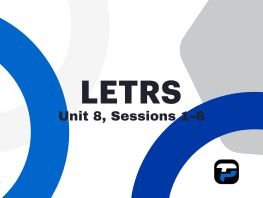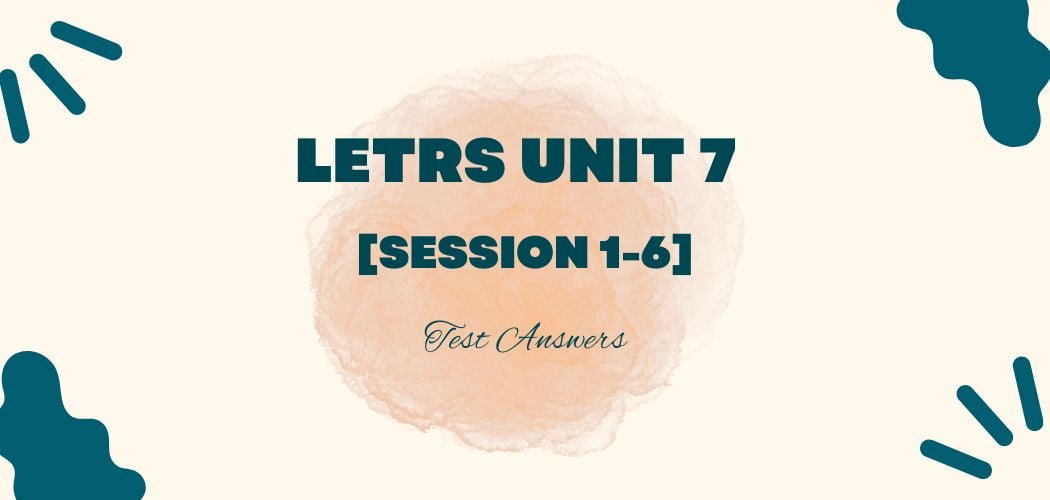The HESI Anatomy and Physiology test consists of 25 multiple choice questions which must be completed within 25 minutes. This portion of the HESI covers each of the structures associated with the human body and the function of these structures.
HESI Anatomy & Physiology Practice Test
The HESI Anatomy & Physiology Test covers general terminology, histology, mitosis and meiosis, and various organs and body systems.
Question 1. Which plane divides the body into upper and lower sections?
A. Frontal
B. Transverse✅
C. Sagittal
D. Oblique
Question 2. Which part of an arm is the most distal?
A. Fingers✅
B. Wrist
C. Elbow
D. Shoulder
Question 3. What term refers to being away from the body’s midline?
A. Anterior
B. Proximal
C. Lateral✅
D. Superior
Question 4. Which is the most superficial part of the head?
A. Brain
B. Skull
C. Scalp
D. Hair✅
Question 5. What type of macromolecule are enzymes?
A. Proteins✅
B. DNA
C. Lipids
D. Carbohydrates
Question 6. What is the basic unit of life?
A. Organelle
B. Tissue
C. Organ
D. Cell✅
Question 7. Which organelle in a eukaryotic cell organizes and guides chromosomal movement during cellular reproduction?
A. Cilia
B. Golgi apparatus
C. Centriole✅
D. Mitochondria
Question 8. A diploid human cell has 46 chromosomes. What results from the meiosis of such a cell?
A. 2 cells each having 46 chromosomes
B. 4 cells each having 46 chromosomes
C. 2 cells each having 23 chromosomes
D. 4 cells each having 23 chromosomes✅
Question 9. Where does meiosis happen in a female?
A. Ovaries✅
B. Uterus
C. Breasts
D. Liver
Question 10. What is the study of tissues called?
A. Cytology
B. Histology✅
C. Anatomy
D. Physiology
Question 11. Which tissue type may secrete mucus?
A. Nervous
B. Muscle
C. Epithelial✅
D. Connective
Question 12. Which tissue type is the most abundant in the body?
A. Nervous
B. Muscle
C. Epithelial
D. Connective✅
Question 13. Which type of muscle tissue is voluntary?
A. Skeletal✅
B. Cardiac
C. Smooth
D. Rough
Question 14. Which bodily system includes skin, hair, and nails?
A. Cardiovascular
B. Nervous
C. Integumentary✅
D. Endocrine
Question 15. Which layer of the skin’s epidermis is the most superficial?
A. Stratum corneum✅
B. Stratum lucidum
C. Stratum spinosum
D. Stratum basale
Question 16. Which of the following releases an oily secretion to lubricate skin?
A. Eccrine glands
B. Apocrine glands
C. Sebaceous glands✅
D. Adipose tissue
Question 17. What type of bone is the sternum?
A. Long
B. Flat✅
C. Irregular
D. Sesamoid
Question 18. What type of cells forms bone tissue?
A. Osteoblasts✅
B. Osteoclasts
C. Osteocytes
D. Osteogenic cells
Question 19. Which bone is part of the appendicular skeleton?
A. Mandible
B. Occipital
C. Rib
D. Humerus✅
Question 20. What type of muscle assists the prime mover?
A. Agonist
B. Antagonist
C. Synergist✅
D. Sarcomere
Question 21. Which part of the nervous system is responsible for the fight-or-flight response?
A. Central nervous system
B. Somatic nervous system
C. Parasympathetic division (autonomic nervous system)
D. Sympathetic division (autonomic nervous system)✅
Question 22. Which part of a neuron transmits an impulse toward the neuron’s nucleus?
A. Dendrite✅
B. Cell body
C. Axon
D. Myelin sheath
Question 23. Which part of the brain is responsible for the muscular coordination required for walking?
A. Brain stem
B. Cerebellum✅
C. Cerebrum
D. Diencephalon
Question 24. Which organ links the endocrine and nervous systems?
A. Brain stem
B. Pituitary
C. Hypothalamus✅
D. Thalamus
Question 25. Which endocrine gland is important for maintaining blood glucose homeostasis?
A. Adrenal medulla
B. Parathyroid
C. Thyroid
D. Pancreas✅
Question 26. Which hormone is released from the posterior pituitary?
A. Antidiuretic hormone✅
B. Adrenocorticotropic hormone
C. Growth hormone
D. Thyroid hormone
Question 27. Which hormone triggers ovulation in females?
A. Estrogen
B. Luteinizing hormone✅
C. Progesterone
D. Oxytocin
Question 28. Which blood component is important in blood clotting?
A. Platelets✅
B. Plasma
C. Erythrocytes
D. Leukocytes
Question 29. Which heart chamber receives deoxygenated blood returning from the body?
A. Right ventricle
B. Left ventricle
C. Right atrium✅
D. Left atrium
Question 30. In between which heart chambers is the mitral valve located?
A. Right atrium and right ventricle
B. Left atrium and left ventricle✅
C. Right atrium and left atrium
D. Right ventricle and left ventricle
Question 31. Which blood vessel supplies blood to the heart muscle?
A. Coronary artery✅
B. Coronary sinus
C. Inferior vena cava
D. Aorta
Question 32. Which of the following types of blood vessels has the thinnest walls?
A. Arteries
B. Arterioles
C. Capillaries✅
D. Venules
Question 33. Which of the following is part of the lower respiratory system?
A. pharynx
B. larynx
C. pharynx
D. bronchi✅
Question 34. Which of the following happens during inhalation?
A. The diaphragm relaxes and the volume of the thoracic cavity decreases.
B. The diaphragm relaxes and the volume of the thoracic cavity increases.
C. The diaphragm contracts and the volume of the thoracic cavity decreases.
D. The diaphragm contracts and the volume of the thoracic cavity increases.✅
Question 35. Which statement regarding the lungs is correct?
A. Both lungs have two lobes.
B. Both lungs have three lobes.
C. The right lung has three lobes while the left lung has two lobes.✅
D. The left lung has three lobes while the right lung has two lobes.
Question 36. What type of macromolecule in food begins chemical digestion in the mouth through the action of salivary amylase?
A. Lipids
B. Carbohydrates✅
C. Proteins
D. Nucleic acids
Question 37. Where in the digestive system are nutrients absorbed into the bloodstream?
A. Stomach
B. Small intestine✅
C. Large intestine
D. Rectum
Question 38. Which best describes what occurs in the stomach?
A. Primarily mechanical digestion
B. Primarily chemical digestion
C. Both mechanical and chemical digestion✅
D. Neither mechanical nor chemical digestion
Question 39. What is the function of bile?
A. To emulsify fats✅
B. To neutralize the acidic chyme
C. To digest proteins
D. To digest carbohydrates
Question 40. Which two types of organs in the body are important sites of water reabsorption?
A. Small intestine and lungs
B. Skin and stomach
C. Large intestine and kidneys✅
D. Capillaries and diaphragm
Question 41. What is the name of the tubes that connect the kidneys to the urinary bladder?
A. Ureters✅
B. Nephrons
C. Distal tubules
D. Glomeruli
Question 42. Where are sperm stored in the testes?
A. Seminiferous tubules
B. Vas deferens
C. Prostate
D. Epididymis✅
Question 43. After ovulation, what does the follicle develop into?
A. Egg
B. Corpus luteum✅
C. Embryo
D. Zygote
Question 44. Which part of the female reproductive tract connects the ovary to the uterus?
A. Fallopian tube✅
B. Cervix
C. Vagina
D. Endometrium
Question 45. What is the route of blood in the pulmonary circuit?
A. Right ventricle—pulmonary artery—lungs—pulmonary vein—left atrium✅
B. Right atrium—pulmonary artery—lungs—pulmonary vein—left ventricle
C. Left ventricle—pulmonary vein—lungs—pulmonary artery—right atrium
D. Left atrium—pulmonary vein—lungs—pulmonary artery—right ventricle
Question 46. Which of the following is a type of agranular leukocyte?
A. Neutrophils
B. Basophils
C. Monocytes✅
D. Eosinophils
Question 47. Which of the following is directly connected to the hypothalamus by nervous tissue?
A. Anterior pituitary
B. Posterior pituitary✅
C. Thalamus
D. Thyroid
Question 48. Which of the following correctly describes the vertebral column?
A. There are 7 cervical vertebrae, 5 thoracic vertebrae, and 12 lumbar vertebrae.
B. There are 5 cervical vertebrae, 12 thoracic vertebrae, and 7 lumbar vertebrae.
C. There are 12 cervical vertebrae, 5 thoracic vertebrae, and 7 lumbar vertebrae.
D. There are 7 cervical vertebrae, 12 thoracic vertebrae, and 5 lumbar vertebrae.✅
Question 49. Which statement about compact bone is correct?
A. Compact bone is found on the exterior of all bones.✅
B. Compact bone contains a latticework called trabeculae.
C. Compact bone is the site of blood cell formation.
D. Compact bone remains quite stable over time.
Question 50. In which layer of skin is keratin located?
A. Dermis
B. Epidermis✅
C. Subcutaneous layer
D. Adipose layer



